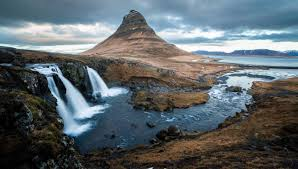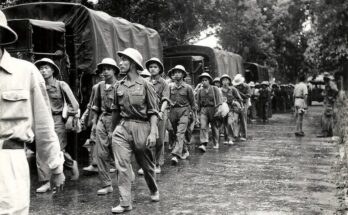Introduction
The Viking Age (c. 793–1066 AD) was an era of exploration, conquest, and cultural transformation. While the Vikings are often associated with raiding and pillaging, they were also incredible seafarers, traders, and settlers. One of the most fascinating Viking settlements was Iceland a rugged island in the North Atlantic. But how did these fearless Norsemen find their way to Iceland? And what was life like in this harsh, unforgiving land? Let’s dive into the saga of the Viking Age in Iceland.
The Discovery of Iceland
Norse Exploration: Setting Sail for the Unknown
The Vikings were expert navigators, using the stars, ocean currents, and even bird migrations to guide them. According to historical sources like the “Íslendingabók” (The Book of Icelanders) and the “Landnámabók” (The Book of Settlements), Iceland was first discovered by Norse explorers in the late 9th century.
Who Discovered Iceland?
The first Norseman to spot Iceland was likely Naddodd, a Viking from Norway, who was blown off course around 860 AD. He called the land “Snæland” (Snow Land) because of its icy terrain. Following him, a Swede named Garðar Svavarsson circumnavigated the island and confirmed it was an actual landmass.

The First Settlers: Ingólfr Arnarson
Ingólfr Arnarson, a Norwegian chieftain, is credited as the first permanent Norse settler of Iceland around 874 AD. He followed Viking tradition by throwing his high-seat pillars overboard and settling where they landed—this place became Reykjavík, Iceland’s modern capital.
The Settlement of Iceland
The Landnám Period (Settlement Era)
The Landnám period (c. 870–930 AD) was when thousands of Norse settlers, mostly from Norway, arrived in Iceland. They brought with them livestock, tools, and their rich Norse traditions. Over time, these settlers established farms and small communities, shaping Iceland’s unique culture.
Why Did the Vikings Settle in Iceland?
- Escape from Norway: Harsh rule under King Harald Fairhair pushed many Vikings to seek new lands.
- Overpopulation: Limited resources in Scandinavia forced expansion.
- Opportunity: Iceland offered fertile land for farming and fishing.
Challenges of Settling in Iceland
The Vikings faced several hardships in their new home:
- Harsh Climate: Cold winters and volcanic eruptions made survival difficult.
- Limited Resources: Iceland lacked forests, making wood scarce.
- Isolation: The settlers were far from the rest of the Norse world, requiring self-sufficiency.
Viking Society in Iceland
The Althing: The World’s Oldest Parliament
By 930 AD, Icelandic settlers established the Althing, the oldest existing parliament in the world. It was held annually at Þingvellir, where chieftains (goðis) met to create laws, resolve disputes, and make important decisions.
Law and Order: The Role of the Lawspeaker
The Lögsögumaðr (Lawspeaker) was the Althing’s highest official. His role was to memorize and recite the laws, ensuring justice was maintained.
Iceland’s Social Structure
Icelandic Viking society had a hierarchical structure:
- Chieftains (Goðis): Powerful leaders who governed local areas.
- Farmers (Bændr): Landowners who formed the backbone of society.
- Thralls (Þrælar): Slaves captured during Viking raids.
Norse Mythology and Religion in Iceland
Pagan Beliefs and Gods
Before converting to Christianity, Icelanders followed the Old Norse religion, worshipping gods like Odin, Thor, and Freyja. Rituals and sacrifices (blóts) were common, especially at sacred sites.
Conversion to Christianity
In the year 1000 AD, the Althing decided to peacefully convert Iceland to Christianity. This decision helped maintain unity and avoid conflict with Christian Europe.
Economy and Livelihood
Farming and Fishing
The Vikings in Iceland relied on sheep farming, cattle herding, and fishing for survival. Harsh winters made food storage and preparation essential.
Trade and Bartering
Since Iceland lacked natural resources like timber and metals, trade with Norway and other Norse territories was crucial. Items like dried fish, wool, and falcons were highly valued exports.
The Icelandic Sagas: Preserving Viking Heritage
Iceland is famous for its sagas, epic stories written in the 12th-14th centuries that preserve Viking history, heroism, and family feuds. Some of the most famous sagas include:
- Egils Saga: The story of the warrior-poet Egill Skallagrímsson.
- Njáls Saga: A dramatic tale of honor, law, and revenge.
- Laxdæla Saga: A story of love, rivalry, and tragedy.
The End of the Viking Age in Iceland
The Loss of Independence
In 1262, Iceland fell under Norwegian rule, marking the end of its Viking Age independence. Later, it became part of Denmark in 1380.
Climate Change and Hardship
The Little Ice Age (c. 1300-1850) brought colder temperatures, making survival even harder. Volcanic eruptions and harsh winters led to food shortages.
Conclusion
The Viking Age in Iceland was a period of incredible resilience and adaptation. From daring voyages to establishing a unique society, the Norse settlers left an enduring legacy. Today, Iceland’s Viking heritage lives on in its traditions, sagas, and the world’s oldest parliament, the Althing.
FAQs
1. Why did the Vikings go to Iceland?
The Vikings settled in Iceland to escape harsh rule in Norway, seek new opportunities, and take advantage of fertile land.
2. What was the Althing in Viking Iceland?
The Althing was Iceland’s national assembly, established in 930 AD, where laws were made and disputes settled.
3. What role did Norse mythology play in Icelandic society?
Before Christianity, Icelanders worshipped Norse gods like Odin and Thor, performed sacrifices, and held sacred rituals.
4. How did the Viking Age in Iceland end?
Iceland lost its independence to Norway in 1262, marking the end of its Viking Age. Harsh climate changes also contributed to hardships.
5. What are the Icelandic sagas?
The sagas are epic medieval stories that document Viking history, culture, and feuds, helping preserve Iceland’s heritage.


